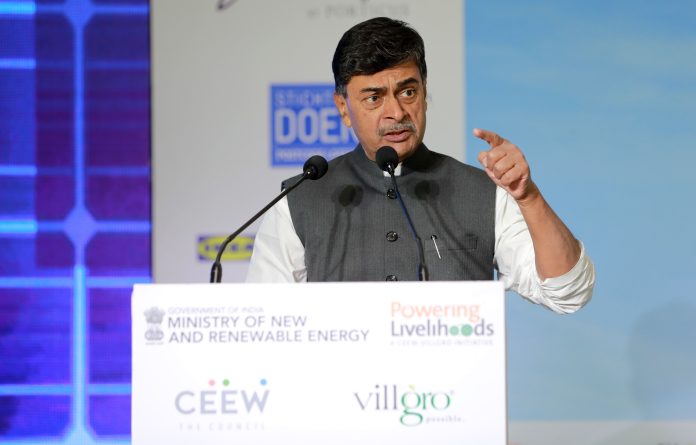New Delhi: Union minister for power, new and renewable energy RK Singh on Wednesday said that the Central government would soon come out with a new scheme for distributed applications of renewable energy (RE).
Addressing a ‘national summit on powering sustainable livelihoods’, organised today by the Council on Energy, Environment and Water (CEEW), the minister said there was already a lot of work happening on the ground and the scheme could benefit lakhs of families across the country. “We will, however, need large scale-manufacturing and standardising of distributed applications of RE to lower prices and expand the sector. We have seen the potential of grid-scale solar power, and efforts are on to scale up distributed applications of RE for livelihoods,” he said.
Also Read: ‘Renewable energy share goes up 27.5% in total power generation’
“Just like we have a large programme on rooftop solar and solar irrigation, we will create a large programme for DRE livelihoods,” said Singh, at the event, which was jointly organised by the ministry of new and renewable energy and Villgro.
“The government plans to make decentralised renewable energy (DRE) livelihood equipment affordable. One aspect of this will be tying up with banks. If a family wants to own a solar dryer, they should be able to get financing from the banks – we will work towards it. Manufacturers and users of DRE for livelihoods are pioneers and now the government will scale it up to the next level,” the minister added.
Also Read: Smart meters to cut down energy cost by 2-2.5%: Power minister
The Union minister also released two new reports by CEEW and Villgro, which show that clean technologies have the potential to impact 37 million livelihoods in India’s agriculture and textile sectors and translate into a market opportunity worth almost ₹4 lakh crore (about USD 50 billion). Further, 70% of women and farmers using clean technology reported an income increase, typically by 35%. They use clean-energy powered products such as solar-powered silk reeling machines, multi-food processors, micro solar pumps, solar vertical fodder grow units, among others, to enhance and diversify their income.
In India, solar-powered pumps—higher capacity and micro-pumps—have the maximum deployment potential, followed by solar-powered vertical fodder growing units and solar dryers. Collectively, these four technologies alone can impact around 27 million livelihoods. Unsurprisingly, solar pumps are the most mature among these technologies due to the government programmes supporting them since 2015, said the report.
Also Read: Jharkhand to get new Solar Policy, aims 4000MW green energy in 5yrs
Abhishek Jain, fellow and director – powering livelihoods, CEEW, said, “India is among the global leaders in clean energy transition. With a programme like Powering Livelihoods, we are taking this clean energy transition to the masses and contributing to their incomes and livelihoods. By deploying more than 11,000 such technologies across India since the pandemic, we have shown the impact of clean-energy-powered livelihood technologies on enhancing and diversifying people’s incomes. In a country where a million youth reaches the working-age population every month, we need to aggressively support jobs and livelihoods.”
The reports found that clean-tech-powered technologies have the greatest impact opportunity in Uttar Pradesh, followed by West Bengal, Bihar, Gujarat, Maharashtra, Madhya Pradesh, and Karnataka. But the relative market for each livelihood technology varies across states. For example, micro solar pumps have the highest market in West Bengal, whereas solar dryers have the highest market in Maharashtra.
Also Read: Cabinet nod to National Green Hydrogen mission, ₹19744-Cr fund
Further, the CREW-Villgro analysis highlighted that women form the majority of these cleantech users currently. Out of the 767 users surveyed across 19 states, 74% of respondents were women. The clean technologies deployed brought out several social impacts as well.
Ananth Aravamundan, sector lead – Climate Action, Villgro, said, “Through Powering Livelihoods, we have supported social entrepreneurs who are trying to create lakhs of livelihoods in rural India by harnessing renewable energy, using scalable and replicable business models. Over a 15-year investment horizon, the clean tech product variants become more attractive than their grid alternatives. We hope that the evidence generated by this programme will motivate policymakers, financiers and manufacturers to extend support to mainstream such livelihood products.”




